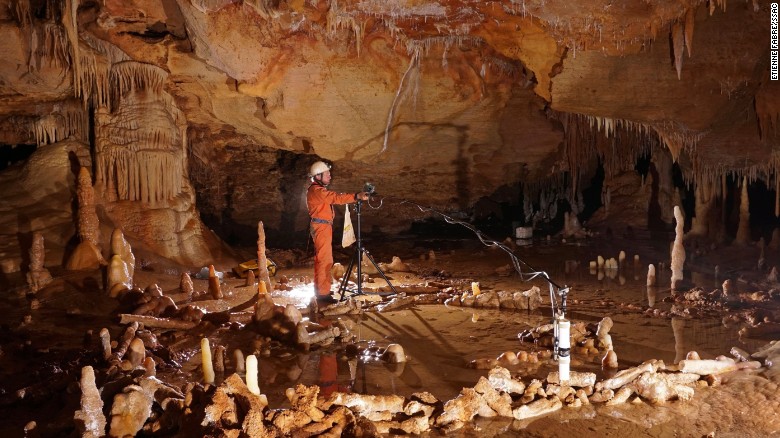Story highlights
- Six structures were found inside a cave in southwest France
- The discovery suggests the elaborate structures were built by Neanderthals
(CNN)Mysterious circular structures found deep inside an underground cave in France are the work of Neanderthals who were living in the region more than 175,000 years ago, researchers believe.
The impressive discovery suggests we may have previously underestimated the abilities of the early human species.
The structures, which are made up of nearly 400 pieces of stalagmites -- pillars of mineral deposits which grow upward -- were built 300 meters (984 feet) inside the Bruniquel Cave in southwest France.
The fragments were wrenched from the cave's floor and meticulously rearranged, mostly into two circular walls, long before modern humans arrived in Europe 40,000 years ago.
A new report, published in the journal Nature, suggests the circles were carefully planned, but it's unclear why they were built.
However, Sophie Verheyden, study co-author of the Royal Belgian Institute of Natural Sciences, says researchers haven't yet determined whether the caves were used for refuge or symbolic reasons.
"It remains a very mysterious question and we all want to know," she told CNN.
"Of course it's very easy to directly think about religious or ritual [reasons] for these structures," Verheyden explained, "but we don't have evidence that this hypothesis is more important than others."
Verheyden said other theories include the possibilities that the circles were built to hide in, or to seek refuge from cold weather.
Traces of fire are present on all of the structures, which also include burnt fragments of bone.
The site has mostly been untouched for tens of thousands years, with the exception of bears, who left hibernation hollows, claw marks and footprints.
The very existence of the structures is impressive because it indicates that humans began occupying caves much earlier than previously thought.
Until now, the oldest cave believed to have been occupied by humans dated back just 38,000 years.
"Early Neanderthals were the only human population living in Europe during this period," the report said.
"At first we were quite afraid of the distance between these two ages," Verheyden explained.
"We never thought about such an old age, so the first time when I told Jacques Jaubert, the archaeologist, he asked me to repeat it."
Researchers used a radioactive method to determine the age of the arrangements.
"We first date the stalagmites used in the structure so we are sure that this is the oldest age possible," she said, "then afterwards we also date the new stalagmites which are growing on the structure [since] probably when the structure was abandoned, which gives you the minimum age."
The National Center for Scientific Research explained that until now, scientists believed Neanderthals did not yet venture far underground, weren't intelligent enough to build such elaborate structures and had not yet mastered such sophisticated use of lighting and fire.
"Such an old and complex structure so far in the cave is really the first and oldest one," Verheyden said.









